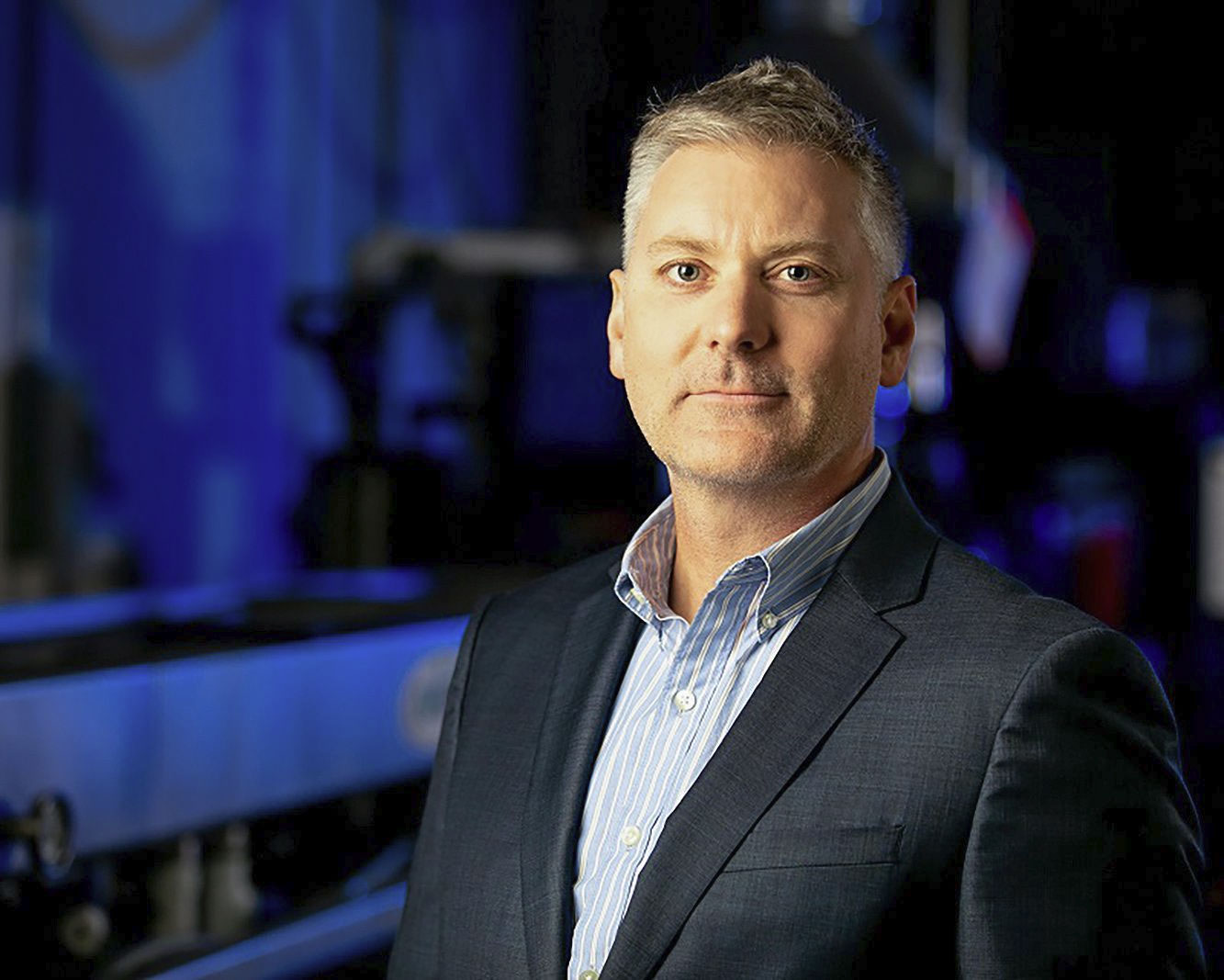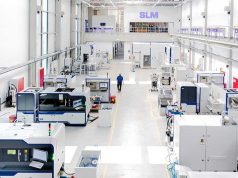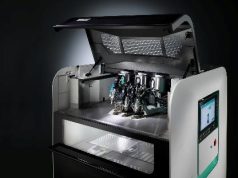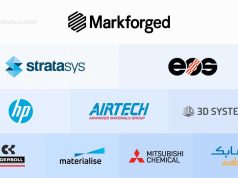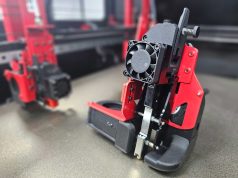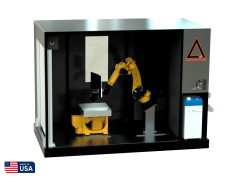Essentium is a 3D printing specialist known for its innovative HSE technology. 3Printr.com asked Lars Uffhausen, Chief Operating Officer, Chief Financial Officer and Co-founder of Essentium Inc. seven questions in an e-mail interview. Uffhausen discusses the impact of COVID-19 on Essentium and the additive manufacturing industry as a whole, focusing in the importance of supply chain flexibility.
1. How is Essentium and the team doing in the current COVID-19 crisis?
We are an essential business based on the clients we serve, so we have remained in operation. We had planned to set-up a Manufacturing Process Center later this year. However, we saw the global supply chain for PPE was struggling, and we knew we could help. So, we set up the center in just 10 days and pivoted to produce face masks.
We mobilized our resources and significant IP in materials and additive manufacturing production to design the mask kit comprises a reusable 3D printed mask frame and filtration media. It is produced with Essentium TPU74D (thermoplastic urethane) which allows for easy cleaning. The Essentium mask has been created for general non-medical use during COVID-19 epidemic, based on FDA Emergency Use Authorization. Production capacity is currently 5,000 units per week. We have also made the design of the mask freely available through the National Institute of Health (NIH) open source model. This initiative is led by our COVID-19 Response Strategy Team.
2. Essentium has regularly pointed out the advantages of on-site production and the potential of additive manufacturing even before the crisis, are you currently seeing this demand confirmed?
The situation has intensified the role additive manufacturing is set to play in supporting industrial supply chains that are impacted by traditional manufacturing and imports. Many manufacturers are working furiously to qualify new suppliers around the world and source the parts they need at the lowest price. But, with additive manufacturing, new opportunities exist for many types of components where manufacturers may no longer need to source those parts from distant suppliers. Instead, they can simply search the availability of materials and then begin the process of building those parts in-house.
Not only will they reduce the time and money it once took to purchase and transport parts, they will greatly speed time to market, which is particularly critical in today’s environment.
3. Do you think that the current crisis will lead to a rethinking in politics and economy?
The pandemic shines a light on many of the challenges with classic just in time manufacturing. It also shines a light on the challenge faced by the distance that we typically see between production and consumption. Most of the world’s producing nations are in Asia. This geographic distance alone removes the ability for the supply chain to be agile.
There is a huge component of agility that’s integral to the just in time model, but when you’ve got distribution and a lot of physical distance baked into the supply chain, it becomes quite challenging for the model to work. This is where additive manufacturing plays an important role.
By installing equipment that is highly flexible, manufacturers can begin to address supply chain risks by producing parts locally; or by printing jigs, fixtures, and tooling to keep factories operating at the scales they are used to without prolonged lead times.
4. What role do you think will additive manufacturing play in the future in order to secure critical infrastructure on a regional level, even outside of medical applications
We are likely to see a lasting shift in the way manufacturing operates. Many companies are realizing that is they can produce parts themselves, without relying on global suppliers. They will be in a stronger position to get products to market with speed, scale and most importantly flexibility.
As 3D printing overcomes obstacles to large-scale production, it will help companies gain market share, bring manufacturing closer to customers, win more business, increase customer satisfaction, and achieve significant TCO and economic advantages.
5. What role will digital warehousing play in this context?
Rather than stocking a warehouse full of parts that may/may not become obsolete, additive manufacturing condenses the physical space into digital files that can be stored in the cloud and easily accessed if/when needed. This distributed manufacturing approach enables companies to decentralize production to manufacture the final product closer to the customer, while utilizing digital warehousing solutions.
Today, many procurement teams are working overtime to qualify multiple suppliers around the world and source the parts they need at the lowest available price. But, with additive manufacturing, you no longer need to source those parts from many different suppliers. Instead, you can simply search the availability of materials and then begin the process of building those parts in-house or by using digital warehousing. Not only will you reduce the time and money it once took to purchase and transport the parts, you will greatly speed time to market.
This kind of self-contained digital warehousing supply chain will prove to be a critical success factor in today’s increasingly uncertain world. If you can produce critical parts yourself without relying on global suppliers, you’ll be in a stronger position to get your products to market and weather any storm—whether it’s a disease, a natural disaster or political upheaval.
In digital inventory solutions, the warehouse itself is available digitally for on-demand production located near the source of need. Digital files sent securely from the manufacturer ensure OEM-accurate designs, including in facilities across the world from the original supplier.
Sending digital files around the world saves time and money but brings with it concerns from an IP perspective. Preserving IP digitally, especially for mission-critical industries such as defense or aerospace, both of which have shown deep interest in the adoption of additive manufacturing, is still seen as a challenge.
6. Which advantages does it have if materials and processes come from one source and how important is it that the machines are independent of materials?
We passionately believe open additive ecosystems will prevail. It has always been our vision and our strategy. The expansion of an open additive ecosystem means customers finally have their hands on the steering wheel of their own futures, and able to unlock their own innovations.
An open market focused on developing new materials, such as the recently introduced high-temperature materials from Essentium, and better and faster machines is the only way for manufacturers to create new applications and new business opportunities. With this approach, the future belongs to the customer, not to the OEM.
7. Which challenges do you see in this context?
Until now, the industrial AM market has been dominated by closed systems where customers are locked into vendors’ hardware, processes, and materials. As the technology obstacles around economics, scale, strength, and speed of production fall away, AM is ramping quickly. Manufacturers are now stepping back and re-assessing their relationships with AM vendors. Most will simply not stand for vendor lock-in. Instead they are demanding open ecosystems to overcome system inflexibility and to use the materials of their choice.
Subscribe to our Newsletter
3DPResso is a weekly newsletter that links to the most exciting global stories from the 3D printing and additive manufacturing industry.



